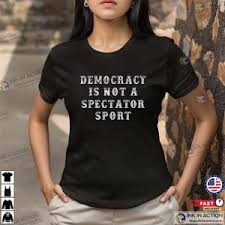One month out after Donald Trump and the Republicans beat Kamala Harris and the Democrats, the
reasons for the electoral defeat are still being debated. Yet, while it is possible that Harris could have won, but for several mistakes that she made, it is not clear that any Democrat could have won this election. In fact, the roots of Harris’s and the Democratic losses in 2024 are deep going back at least to three previous Democratic presidents.Contrary to conventional wisdom, the 2024 presidential race was close. Had Harris picked up approximately 124,000 votes in the critical swing states of Michigan, Pennsylvania, and Wisconsin, she would have been an electoral college winner for the presidency. This is comparable to how in 2016 Hilary Clinton would have won the presidency had she picked up 90,000 more votes in the same three states, or had Trump won 43,000 more votes in 2020 in Arizona, Georgia, and Wisconsin.
Some might argue that had she picked a different vice-presidential candidate, such as Josh Shapiro from Pennsylvania, which might have made a difference. Or that had she developed a better narrative or broken with Biden sooner, perhaps the results would have been different. But the roots of her and the Democratic Party’s failure to win, and especially to lose the working class, go back decades.
It started in the 70s and 80s, when the US economy was restructuring away from manufacturing. The jobs that were lost belong to the working class and with the new economic employment opportunities going to those who were college educated. As manufacturing disappeared from the US, the gap between the rich and poor accelerated, starting in the eighties up to the present. The Democrats did little to address this growing inequality, and in fact, embraced it and the new economy and the new workers who would be the winners.
The first major mistake was under Bill Clinton. His endorsement and support for NAFTA clearly demonstrated an indifference to how free trade would hurt the working class and people of color. The enthusiasm there and among the Clinton Democrats for free trade drowned out critics who said that unless the agreement protected the working class, it would have hurt them, even though it generated, perhaps overall greater net worth for the business community. NAFTA had winners and losers, and it favored the business community, as well as eventually favoring those college, educated, trained individuals who were to benefit from the new internet based intellectual service economy, of which NAFTA was part.
The second mistake was with Barack Obama. In 2008 as the global economy collapsed due to bank failures in the United States, initially, George Bush pushed through TARP, the Troubled Asset Relief Program, to help bail out banks. Once in office, Obama continued that approach to bail out the too big to fail. His Treasury Secretary, Tim Geithner, when asked at one point about all the hundreds of thousands or millions of homeowners who were going to lose their houses, he demonstrated a tin ear by saying that that would have to happen to save the banks.
Finally, under Joe Biden, his support for the working class was supposedly what led him to defeating Donald Trump in 2020. It was probably less that and more that Trump mishandled the pandemic. But among Biden’s signature achievements was the Inflation Reduction Act, a commitment of hundreds of billions of dollars to transition the United States to the green economy with green jobs. Yet again, these were not jobs that were going to benefit the working class that used to support the Democratic Party. Instead, it would go to those with different skill sets, and not necessarily in areas such as Pennsylvania, Michigan, or Wisconsin, where Democrats needed votes.
Three Democratic presidents, three critical choices that demonstrated a turning away from the working class. What is not surprising is that they finally abandoned the Democrats en masse in 2024 what is more surprising is that they did not do it sooner. As the Democrats regroup, they need to think about these broader and deeper structural choices that the party made and how it has walked away from the working class under each Democratic President for the last fifty years.












